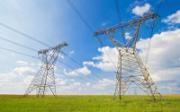
SOUTH Africa last week experienced electricity load shedding. Fortunately, it was of short duration, so the effect was less damaging than in 2008. Moreover, there are now protocols with major industrial producers to cut back electricity usage in peak emergencies. This pre-empted the need for general power cuts and protected households from destructive outages.
Nonetheless, Eskom’s inability to provide seamless power supply is a timely warning that the government and parastatals are unable to meet the economy’s infrastructure needs even at a time of very slow growth. Lack of electricity is not the cause of this slow growth. But if economic growth accelerates any time soon, it will immediately be choked off by the pressure placed on our overstretched infrastructure. We need to revisit the way our indispensable backbone infrastructure can be strengthened to eliminate this constriction on future growth.
After the 2008 crisis, Eskom outlined three essentials to meeting South Africa’s future electricity needs. The first was to reduce demand by 10%. This has been assisted by the roll-out of solar water geysers and low energy light bulbs. However, it is thanks mainly to swingeing price hikes that users have cut their electricity consumption to the targeted levels.
Most important of all has been slow economic growth. This has saved Eskom because it has not come close to realising the other legs of its strategy — increasing its own generation capacity and buying electricity from "co-producers". Without the slow pace of economic growth, demand would have exceeded Eskom’s capacity and load shedding would today be commonplace.
The delays and overspending on Eskom’s new large coal power stations, Medupi and Kusile, are well known. According to Eskom’s 2008 strategy, Medupi should have come on stream last year. It may now only start generating next year. The Ingula pumped storage facility was also supposed to start generating last year, but it faces further delays after this month’s accident.
The 2008 strategy also envisaged that nearly 10% of Eskom’s electricity would by now be purchased from private producers. But repeated delays by Eskom in signing purchase contracts and by the regulator in awarding licences have meant that private generation has been seriously retarded.
As a result, Eskom has been forced to run its ageing generators at full capacity to meet demand. Eventually, essential maintenance work squeezed its reserve margin to critical levels. Last week’s outages were triggered by problems at one generator, forcing cutbacks by Eskom to major consumers across South Africa.
These problems at Eskom are just one example of the economic consequences of the much wider delays and cost overruns in public infrastructure provision throughout the public sector. There are two possible paths forward. The first is to persist with the government’s insistence that all infrastructure investment be done by the state and its institutions — with delays and cost overruns.
The alternative is for the government to extend its embrace of public-private partnerships (PPPs) from the present paltry levels. The government plans to make use of PPPs in barely 3% of its infrastructure spending to 2016. This needs to increase.
The first reason is simply that of time. Private provision can come onstream so much faster. In contrast to the endless delays at Eskom, Finance Minister Pravin Gordhan noted in the recent medium-term budget policy statement that the first 75MW solar plant in the Northern Cape was connected to the Eskom grid three months ahead of schedule and that two wind farms in the Eastern Cape will be connected by May. A further 47 such projects will be completed between next year and 2016 — although of restricted scale, this is construction at a pace public institutions could never match.
Then there is cost. Government infrastructure projects consistently overrun their budgets. The bill for Medupi, for example, originally estimated at R56bn, is now forecast by the Treasury to be R98bn. This overspending will be recovered from future user charges forever. If private projects exceed budget, this means reduced profits for their shareholders, not increased prices for consumers.
And finally, where is the funding to come from? The Treasury lists "mega projects currently under consideration" amounting to R3.6-trillion over the next 10 years. This excludes a possible further R1-trillion on nuclear power stations. The government cannot possibly borrow funds on this scale. It would mean quadrupling the present value of public sector debt.
The increased use of PPPs in infrastructure construction and funding need not reduce the role of the state in the oversight, control and pricing of actual services. Eskom, for example, could retain its monopoly of electricity distribution while relying on an increasing share of private generators. PPPs can also be structured so that ownership of the infrastructure reverts to the government after a defined period.
The insistence that the state do everything when it comes to infrastructure provision must change. South Africa cannot afford such short-sighted ideological obstinacy.
By Prof Gavin Keeton
• Keeton is with the economics department at Rhodes University.
Source: Business Day
Photo: Thinkstock
